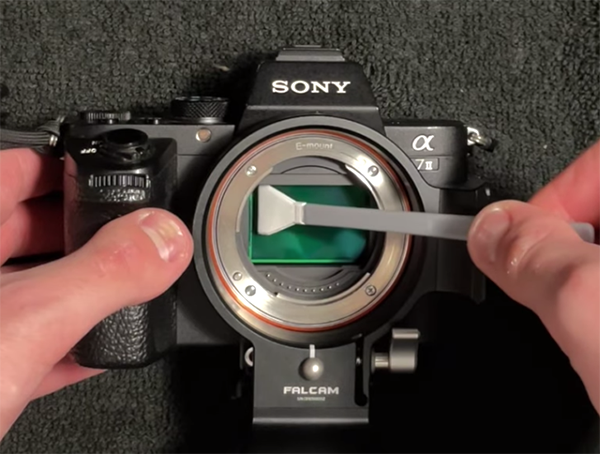The Safe Way to Clean Camera Sensors & Other Photo Gear (VIDEO)

Properly maintaining photo gear is an essential "habit" if you want to prolong the life of your equipment and receive reliable performance. In the important tutorial below you'll learn the do's and don'ts for accomplishing this quickly and safely.
This lesson covers everything from keeping a camera's sensor free of dust and debris, to "sanitizing" lenses and bodies, and keeping other key accessories in pristine condition. We strongly recommend setting up a regular maintenance schedule after watching how it's done.
Instructor Jalen Oban was motivated to create this video after a recent excursion to the dusty Oregon sand dunes that really gunked up his gear. He describes his step-by-step method for returning everything back to perfect condition, reveals the cleaning products he prefers, and provides links where you can find them in the description below the video.

One of the biggest mistakes you can make is using a cloth to rub off dirt and debris; by doing that you'll likely end up with irreparable scratches on everything you touch. That's why Oban always has a dust blower, sometimes referred to as a "rocket blower," in his bag. A microfiber cloth is also "essential," but it's only to be used after you've blown away the contaminants. A soft brush can also be very helpful.
Cleaning a sensor is of upmost importance, but many photographers are afraid to tackle this themselves for fear of damaging the camera's key component. Oban walks you through a very safe procedure and, once again, reveals the affordable tools that he uses. He also explains why it's important to keep sensor size in mind when choosing your supplies.
Oban begins with lens-cleaning tips that are very easy to accomplish. The first step is cleaning the outside of the lens, with the front and rear caps in place. This way you'll avoid further contaminating the glass and moving debris from the outside to the inner workings of a lens. He then removes the lens caps and uses the lens blower on both elements.

Then Oban moistens a cloth with lens-cleaning solution and carefully wipes off any remaining fingerprints or smudges using a slow circular motion. And don't forget to clean the metal contact points on the rear of the lens.
Next comes a similar procedure for cleaning the outside of the camera body. Then, the "scary part," namely the sensor itself. Set aside your worries because you can safely get the job done to perfection by following Oban's clear instructions. After doing this once your apprehension will disappear and the task will be just another "thing" in the future. Oban also demonstrates a quick way to determine when the sensor needs cleaning.
The video concludes with tripod cleaning, which is very important for landscape or seascape photographers who place the legs on dirty terrain or in the water. A simple grain of sand is all it takes to ruin the smooth motion of deploying and retracting the tripod's legs.
Oban's YouTube channel offers many more simple tips on a variety of topics, so be sure to take a look when you have time.
- Log in or register to post comments








































